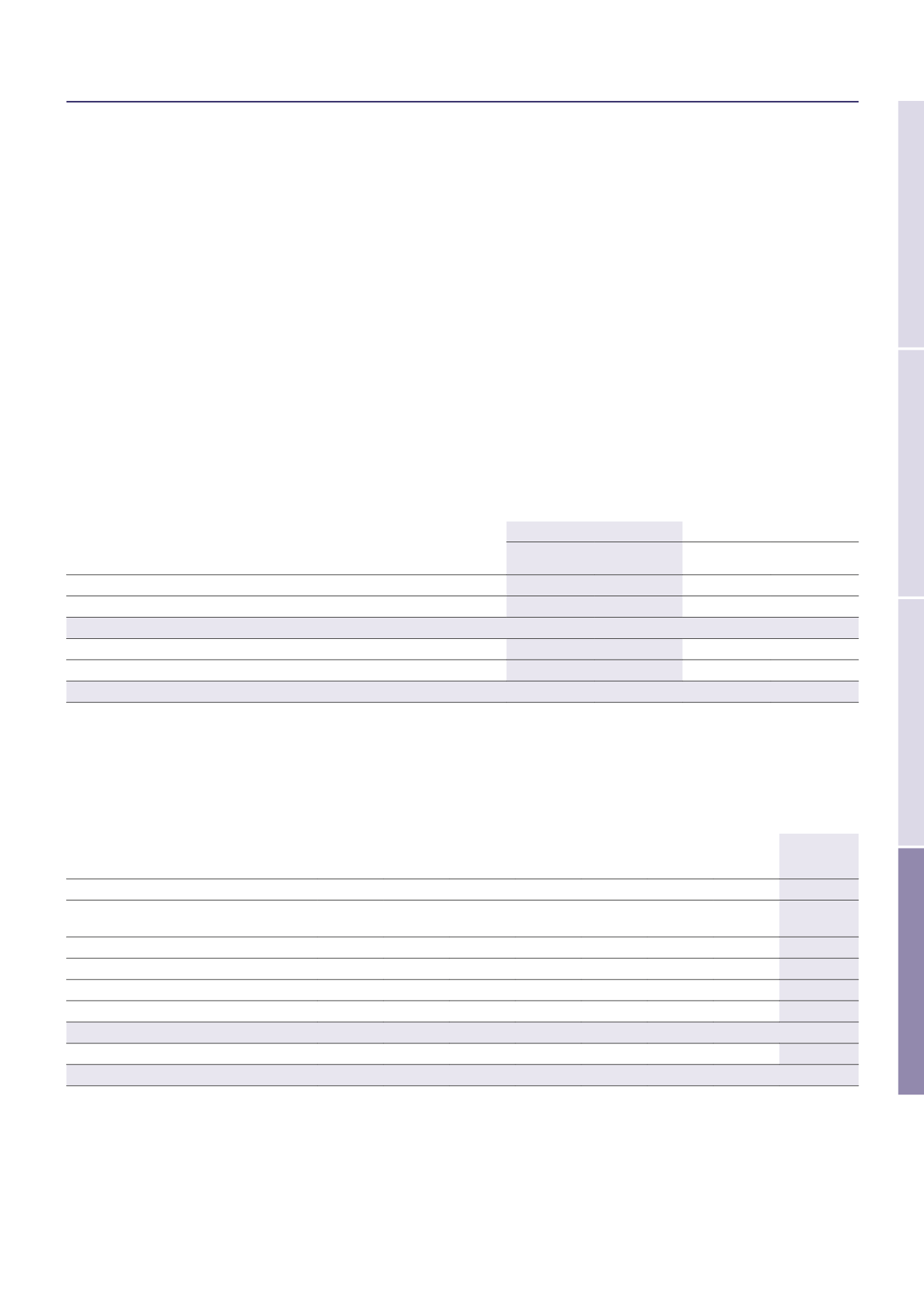

Rothschild & Co | Annual Report 2017
137
1. Overview
4. Financial statements
3.
Management report
2. Business review
Unimpaired loans extended in this manner are not categorised as either past due or as renegotiated. As at 31 December 2017 the cumulative value of all
loans within this category was €3.1 million (31 March 2017: €20.1 million). All of these loans were property loans. There are also some loans which are
overdue, but not impaired, pending an extension of maturity. As at 31 December 2017, these amounted to €12.9 million (31 March 2017: €18.3 million).
Some loans were renegotiated on substantially different terms than before. Typically these loans will include revised covenants and higher margins to
reflect higher credit risk as well as having extended maturities. If these loans had not been renegotiated, they would have been deemed to have been
impaired. As at 31 December 2017, the carrying value of all loans renegotiated was €0.6 million (31 March 2017: €2.1 million).
3 Collateral
The Group holds collateral against loans to customers, as substantially all third party commercial lending is secured. The majority of collateral is in the form
of charges over property assets, or over marketable securities (Lombard lending). There is a realistic possibility, if necessary, of both taking possession of,
and realising, the collateral.
Unimpaired loans (categories 1 to 3) are usually covered by collateral. For category 1, 2 and 3 loans the level of collateral at exit is expected to be sufficient
to cover the balance sheet exposure. Where a loan is deemed to be impaired (categories 4 and 5), the level of the impairment charge is primarily driven by
any expected shortfall in the collateral value, though it is also influenced by the ability of the borrower to service the debt.
Collateral is valued independently at the time the loan is made and periodically thereafter on a rolling basis. Management is able to roll forward a valuation
for reporting purposes via a combination of specific knowledge of the collateral and the application of general indices.
The table below gives an estimate of the fair value of collateral held by the Group as security against its loans to customers that are individually impaired
and past due but not impaired.
In millions of euro
31/12/2017
31/03/2017
Past due but
not impaired
Individually
impaired
Past due but
not impaired
Individually
impaired
Tangible assets collateral
12.9
81.0
18.5
89.6
Financial assets collateral
–
31.0
2.1
26.4
TOTAL
12.9
112.0
20.6
116.0
Gross value of loans
12.9
144.3
18.3
154.2
Impairment
n/a
(57.1)
n/a
(55.3)
Net value of loans
12.9
87.2
18.3
98.9
4 Further credit risk analysis
The tables below show an analysis of credit risk by location and by sector as at 31 December 2017 and 31 March 2017.
A) CREDIT RISK BY LOCATION
Location for loans and advances is measured by reference to the location of the borrower. Debt securities are recorded based on the location of the issuer
of the security.
In millions of euro
France Switzerland
UK and
Channel
Islands
Rest of
Europe
Americas Australia
and Asia
Other 31/12/2017
Cash and amounts due from central banks
1,206.9 2,658.6
–
3.4
–
–
– 3,868.9
Financial assets at fair value through profit
or loss
(1)
18.9
9.3
5.2
15.5
0.5
0.7
0.1
50.2
Loans and advances to banks
657.5
50.9 342.8 328.6 313.0
22.8
14.6
1,730.2
Loans and advances to customers
1,514.9 115.9 795.2 264.9 158.8
78.6
61.6 2,989.9
Available-for-sale debt securities
306.3
– 147.8 422.2 100.0
9.4
1.0
986.7
Other financial assets
138.8
25.5
62.5 102.4
63.3
24.2
9.7
426.4
Subtotal assets
3,843.3 2,860.2 1,353.5 1,137.0 635.6 135.7
87.0 10,052.3
Commitments and guarantees
321.3
48.5
82.5
98.1
0.1
11.4
2.0
563.9
TOTAL
4,164.6 2,908.7 1,436.0 1,235.1 635.7 147.1
89.0 10,616.2
(1) Excluding equity.









